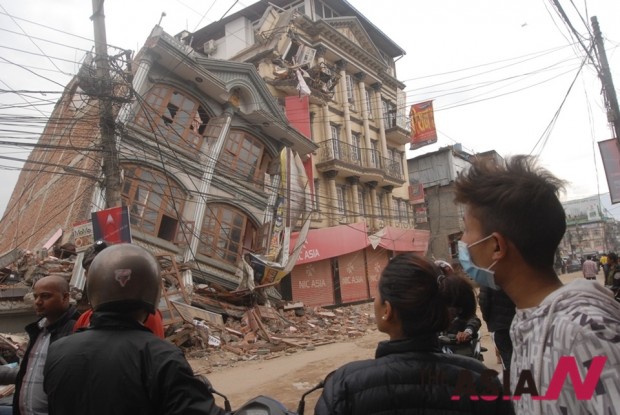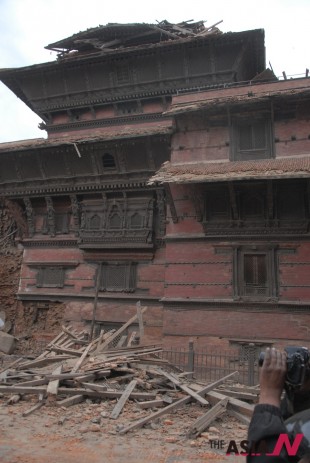Nepal: fear, debris and shattered lives
Khilmaya Gautam, 66, is a heart patient. She cannot walk. Her husband is a diabetic. This old couple of Koteshwore, Kathmandu, who owns a house, spent Saturday night in the open after the earth continued to tremble. They were sleeping under their staircase at their home with their son, daughter-in-law and two grandsons. But when the frequency and intensity of the quake increased, their son took them to an open space carrying mattresses, blankets and quilts at 11 pm. The eight members of the family could not, however, sleep in the open and returned homes when it started raining.
Learning a lesson, they erected a tent high in a hillock near the Tribhuvan International Airport to spend Sunday night with his ailing parents and panicked sons. But the rains and winds were spoilsport again. But they did not return home as they continued to feel the shocks. Like this elderly couple, almost all people spent their first two nights after the powerful quake measuring 7.9 in Richter Scale of Saturday morning in the open. The premises of the Civil Service Hospital, the Constituent Assembly Building, the either bank of the Bagmati and other open spaces were occupied by the quake hit people. The limited open space of the city has turned into makeshift villages. The hospitals received unmanageable number of injured people while the relatives of the victims had to wait hours to get their turn to perform the last rites of the deceased at Aryghat.
About 5000 people were declared dead in the devastating earthquake that rocked Kathmandu at an interval of 82 years by Monday afternoon. Nearly 7000 people were injured. A powerful quake had hit Nepal and northern India in January 1934 killing thousands of people. The quake this time however completely destroyed the cultural sites including the three Durbar Squares rich in medieval arts and aircrafts and listed in the World Heritage Sites and temples. The nine-storey Hanumndhoka Durbar of Kathmandu, the 55-window palace of Bhaktapur and the famous stone-made Krishna Mandir of Patan, the Kasthmandap, after which the city was named, and the Bhimsen Stamba, crumbled down killing several people. The damages to the cultural sites will surely turn costly for the tourism industry. Many historical evidences had disappeared for ever in the quake. Experts have already claimed that it will take at least a decade to restore the damaged monuments. Besides the monuments, a few buildings collapsed while many administrative and other buildings as well as roads have developed cracks.
Now the government is carrying out rescue works while providing relief materials to the victims. Many international and local organizations, neighbouring and friendly countries as well as individuals have provided relief materials to the government. Once the rescue works are over, focus should be laid on restoring the damaged monuments and spoiled beauty of the cultural cities of the valley. Rescue teams from several countries have arrived in Kathmandu. The teams are removing the debris in search of the bodies of the missing people. Scores were killed when the Bhinsen Stambha (tower) located in the heart of the city collapsed. About 100 people were believed to be in the tower when it collapsed in the midday. Many people were trapped when old buildings collapsed in the inner parts of the three cities of the valley. Sindhuplachowk, mountainous districts near Kathmandu was worst hit killing nearly 2000 people. Almost all houses have collapsed in this and other districts and the people are living in the open. Many victims are said to have not received the relief materials. The rains have also prevented the rescuers to reach remote villages. The government has mobilized 16 helicopters, many of them received from India to supply relief materials and airlift the injured ones.




























































